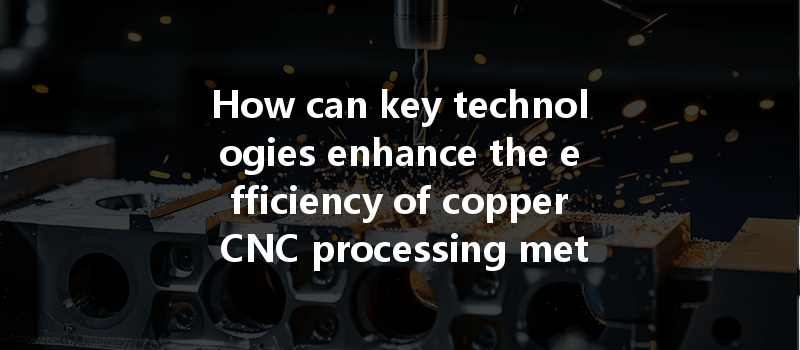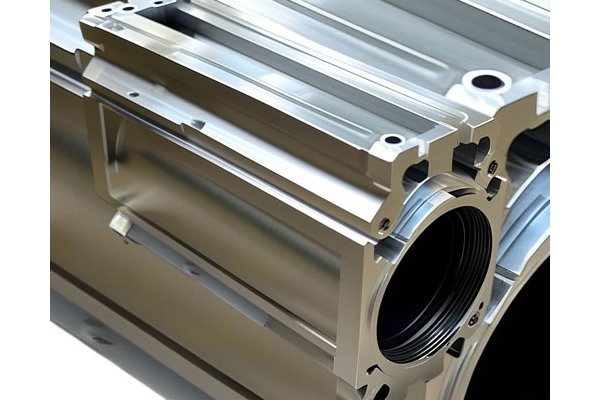Did you know that copper is one of the most widely used metals in industries around the globe, mainly due to its excellent conductivity and resistance to corrosion? In fact, the global copper market was valued at approximately $32.3 billion in 2022, with a projected growth rate of 14.8% from 2023 to
CNC processing has revolutionized how metal parts are manufactured, allowing for high precision, automation, and versatility. However, copper’s unique characteristics—high thermal conductivity, ductility, and tendency to cold weld—present specific challenges in CNC machining. In this comprehensive guide, we’ll explore the key technologies and methodologies that can dramatically enhance the efficiency of copper CNC processing.
Chapter 1: Understanding the Challenges of Copper CNC Processing
Copper is known for its remarkable properties, which also introduce difficulties in CNC machining. Some of these challenges include:
Addressing these issues effectively requires a combination of proper tooling, machining strategies, and innovative technologies.
Chapter 2: Advanced Tooling Techniques
2.
Using cutting tools with specialized coatings can significantly enhance machining efficiency. Common coatings include:
2.
Optimizing tool geometry is crucial for effective copper machining. Here are some considerations:
Chapter 3: Optimized Machining Parameters
3.
Getting the spindle speed and feed rate right is essential for effective CNC machining of copper. Here’s how to optimize them:
3.
Utilizing coolant effectively is essential in CNC machining of copper. Different coolant types can benefit the process:
Chapter 4: Innovative Technologies in CNC Machining

4.
High-Speed Machining can significantly enhance the efficiency of copper processing. Key benefits include:
4.
Integrating additive manufacturing (AM) with CNC machining provides opportunities to build complex geometries that are challenging to machine from solid blocks. For example:
4.
Implementing IoT technologies in CNC machines can greatly enhance process efficiency by:
Chapter 5: Quality Control Measures
Effective quality control is not only about maintaining the finished product but also about ensuring efficient processes:
5.
Employing SPC can help in monitoring process variations. Implementing control charts helps identify deviations early, allowing for adjustments before defects arise.
5.
Using 3D scanning technologies can enhance quality assurance by providing accurate measurements and identifying dimensional discrepancies.
Chapter 6: The Role of Skilled Workforce
Despite advancements in technology, a skilled workforce remains critical in maximizing CNC efficiency:
Chapter 7: Case Studies Demonstrating Improved Efficiency
Case Study 1: Aerospace Component Production
A leading aerospace manufacturer faced tool wear issues while machining copper components critical for avionics. By switching to TiAlN-coated tools and optimizing their machining parameters, they were able to increase tool life by 40% and reduce machining times significantly.
Case Study 2: Telecommunications Hardware
A telecommunications company required precise copper connectors but grappled with high scrap rates. By employing advanced monitoring systems and investing in high-speed machining technologies, they achieved a 30% reduction in waste while enhancing product quality.
The efficient CNC processing of copper is not merely a function of using advanced machines and tools; it encompasses a holistic approach integrating technology, skilled workforces, optimized parameters, and robust quality control measures. As copper continues to play a pivotal role across various industries, understanding and implementing these strategies will be crucial for businesses seeking to improve efficiency and maintain competitive advantage.
Ultimately, investing in these key technologies and methods will not only help enhance production processes but also yield long-term benefits in quality, customer satisfaction, and profitability. By continually refining practices and staying updated on industry advancements, manufacturers can better navigate the complexities of copper CNC machining while achieving sustainable growth.
Thinking about how we can further improve our CNC processing efficiency? The journey starts with understanding the challenges and committing to ongoing innovation—it’s time to lead the way in contemporary metalworking.






